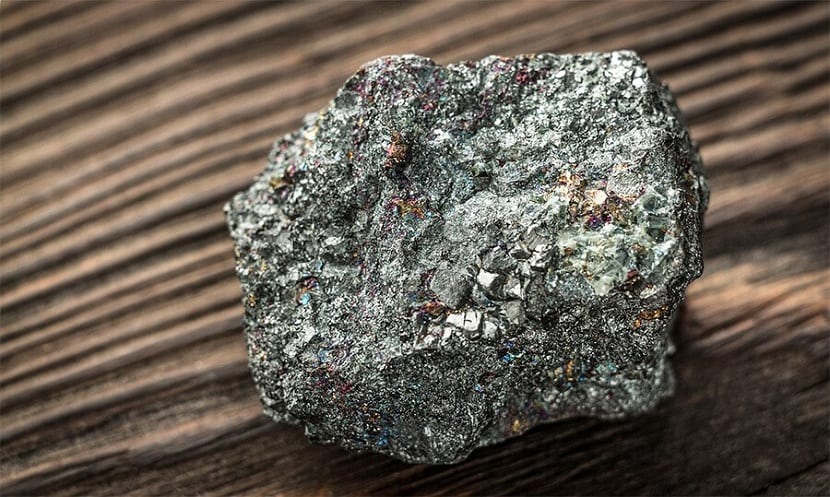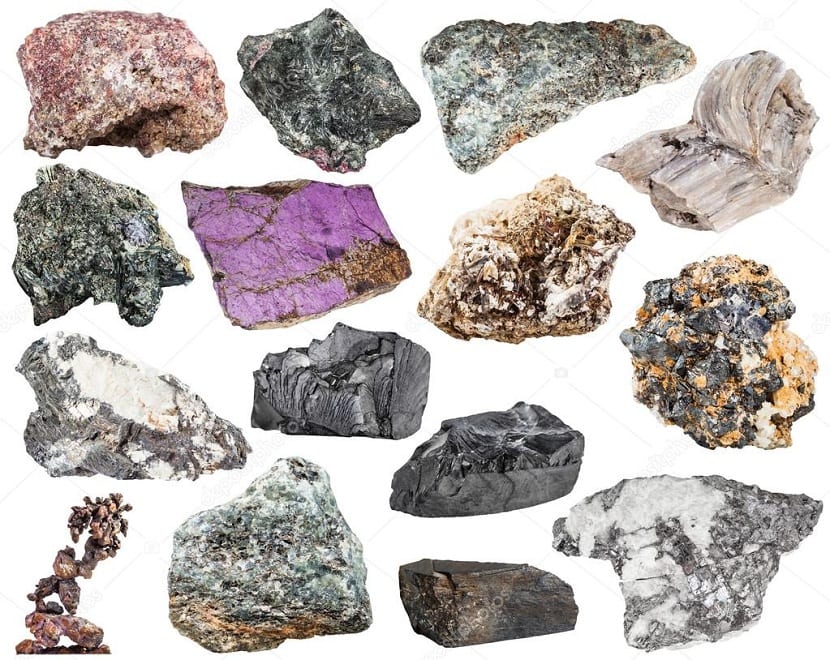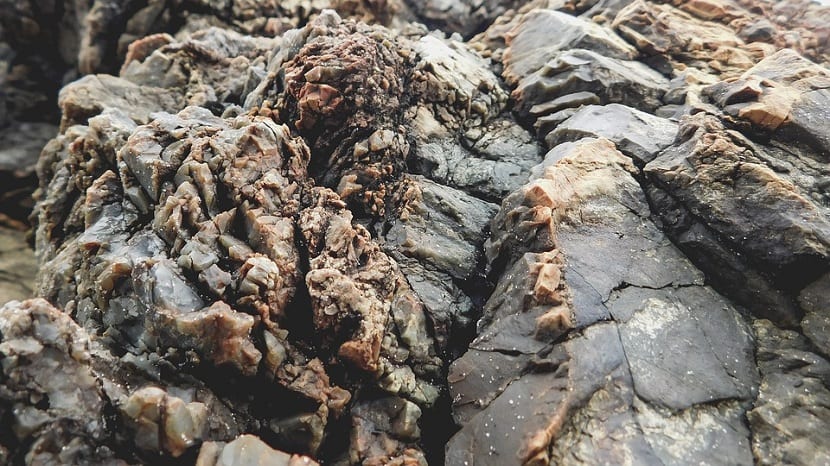
The minerals and rocks They are very important not only for geology, but for the knowledge of the planet. From them we can extract natural resources, construction materials, jewelry, energy resources, etc. Therefore, we are going to focus in this article on minerals and rocks. We will talk about what minerals are and their types, and what rocks are and how important they are.
If you want to know more about minerals and rocks, this is your post 🙂
What are minerals

Minerals are made up of solid, natural and inorganic materials that have had their origin in magma. They can also be formed by the alterations of the minerals that already exist and form others. Each mineral has a defined chemical structure that depends entirely on its composition. It also has unique physical properties from its formation process.
Minerals have ordered atoms. These atoms are found forming a cell or elementary cell that is repeated throughout the entire internal structure. These structures give rise to certain geometric shapes that, although not always visible to the naked eye, are there.
The unit cells form crystals that clump together and form a lattice or crystal mesh structure. These mineral-forming crystals do so very slowly. The slower the formation of a crystal, the more ordered are all the particles, and therefore, the better its crystallization process.
Crystals form or grow depending on the axes or planes of symmetry. The crystalline systems are grouping the 32 kinds of symmetry that a crystal can have. We have some of the main ones:
- Regular or cubic
- trigonal
- Hexagonal
- Rhombic
- Monoclinic
- Triclinic
- tetragonal
The crystals of a mineral are not isolated, but form aggregates. If two or more crystals are growing on the same plane or axis of symmetry, considers it a mineral structure called a twin. An example of a twin is the crystal quartz of a rock. If the mineral covers the surface of the rock, it will be forming a druse or dendrite. For example, pyrolusite.
On the contrary, if the mineral is crystallized in the cavity of a rock, structures known as geodes are formed. These geodes are marketed around the world for their beauty and decoration. Olivine is a clear example of a geode. There are also large geodes such as the Pulpi de Almería mine.
Classification of minerals

There are different criteria for classifying minerals. Let's start with the first one. According to the composition of the minerals, it can be classified in a simpler way. They are divided into:
- Metallifers: They are those that have been formed from magma and are metal ore. The best known are copper and silver, limonite, magnetite, pyrite, blende, malachite, azurite or cinnabar, among others.
- Non-metallic. Among the non-metalliferous we have silicates, whose main component is silica. They are formed from magma in the asthenosphere. They are minerals such as olivine, ecology, talc, muscovite, quartz, ortose and clay. We also have mineral salts, which are formed from the salts that precipitate when the water in the seas and oceans evaporates. They can also be formed from the recrystallization of other minerals. They are minerals formed by precipitation. For example, we have calcite, halite, silvin, gypsum, magnesite, anhydrite, among others.
Lastly, we have other minerals with other components. These have been formed through magma or recrystallization. We find fluorite, sulfur, graphite, aragonite, apatite and calcite.
Rocks and their classification

Rocks are made up of aggregates of minerals or a single mineral. Of the first type we have granite and of a mineral we have rock salt as examples. Rock formation is a very slow process and follows different processes.
According to the origin of rocks, can be classified into three types: igneous, sedimentary and metamorphic. These rocks are not permanent, but are continually evolving and changing. Of course, they are changes that occur in a geological time. That is, on a human scale we are not going to see a rock form or completely destroy itself, but rocks have what is known as the rock cycle.
Igneous rocks
Igneous rocks are those that have been formed from the cooling of magma that comes from inside the Earth. It has a fluid part of the mantle that is known as the Asthenosphere. Magma can cool both inside and by force of the earth's crust. Depending on where the magma cools, the crystals will form in one way or another and at different speeds, giving rise to various textures such as:
- Grainy: when magma cools slowly and minerals crystallize with visible grains of a very similar size.
- Porphyry: takes place when magma cools at different times. At first it starts to cool slowly, but then more and more quickly.
- Vitreous. It is also known as a porous texture. It occurs when magma cools very quickly. In this way, crystals do not form, but it looks like glass.
Sedimentary rocks
They are those that are formed from materials that come from the erosion of other rocks. The materials are transported and deposited at the bottom of rivers or seas. When they accumulate, they give rise to strata. Through some processes like lithification, compaction, cementation and recrystallization form these new rocks.
Metamorphic rocks
They are those rocks that are formed from other rocks. They are normally formed from sedimentary rocks that have undergone both physical and chemical transformation processes. Are the geological agents such as pressure and temperature that are modifying the rock. For this reason, the type of rock depends on the mineral it has and the degree of transformation that it has undergone due to geological agents.
I hope that with this information you can learn more about minerals and rocks.